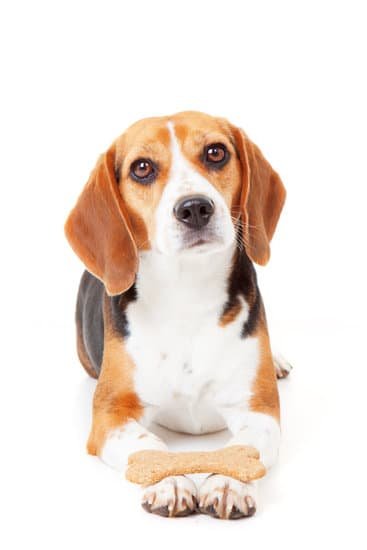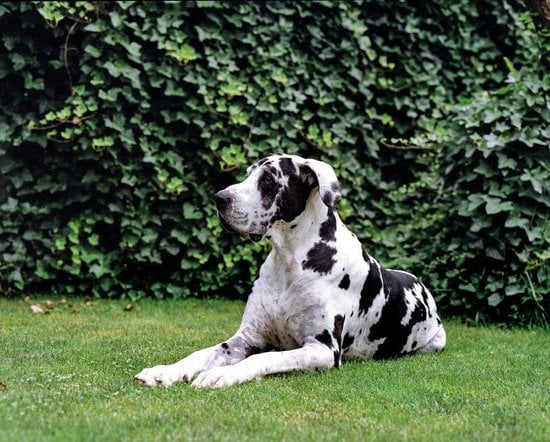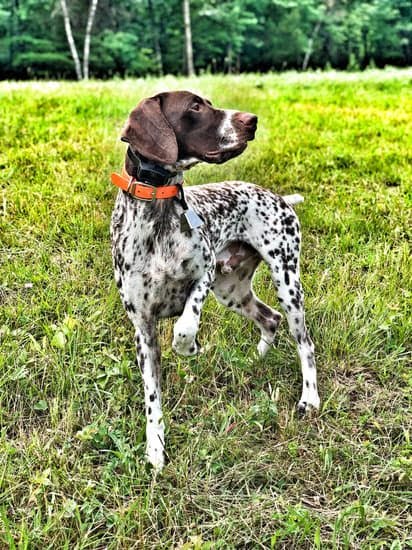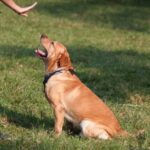House soiling is a common issue that many dog owners face, but it can be effectively addressed through proper training and consistency. Understanding why dogs poop in the house is essential to addressing this behavior. By establishing a routine for your dog and using positive reinforcement techniques, you can help prevent accidents indoors. Crate training can also be a useful tool in teaching your dog where it is appropriate to go to the bathroom.
Supervising and monitoring your dog’s behavior are key factors in successfully training them to refrain from pooping in the house. Cleaning up accidents promptly and properly is crucial to preventing repeat incidents. However, if you find that your efforts are not yielding results, seeking professional help from a trainer or behaviorist may be necessary. By following these tips and guidelines, you can train your dog effectively and achieve success in eliminating house soiling behavior.
Understanding Why Dogs Poop in the House
House soiling is a common issue that many dog owners face, and understanding why dogs engage in this behavior is crucial in effectively addressing the problem. Dogs may poop in the house for various reasons, including lack of proper training, medical issues, anxiety, territorial marking, or simply because they haven’t been taken outside frequently enough. By identifying the underlying cause of your dog’s house soiling behavior, you can tailor your approach to training them accordingly.
Lack of Proper Training
One of the primary reasons why dogs poop in the house is due to a lack of proper training. If your dog has not been taught where it is appropriate to eliminate, they may resort to doing so indoors. Consistent and patient training is essential in teaching your dog where they should go potty. Using positive reinforcement techniques such as rewards and praise when they eliminate outside can help reinforce this desired behavior.
Medical Issues
In some cases, house soiling may be attributed to underlying medical issues such as urinary tract infections, gastrointestinal problems, or mobility issues that make it difficult for the dog to hold their bladder or bowels. If you notice a sudden change in your dog’s elimination habits or suspect that there may be a medical issue causing the behavior, it is important to consult with a veterinarian to rule out any potential health concerns.
Anxiety and Stress
Just like humans, dogs can experience anxiety and stress which may manifest in inappropriate elimination behaviors. Changes in routine, new environments, loud noises, or separation anxiety can all contribute to a dog pooping in the house. Addressing any underlying anxiety issues through training methods focused on building confidence and providing a safe environment for your dog can help alleviate their stress and reduce incidents of house soiling.
Establishing a Routine for Your Dog
One of the key aspects of establishing a routine for your dog is consistent potty breaks. Take your dog outside first thing in the morning, after meals, before bedtime, and several times throughout the day. By taking them out at regular intervals, you can help them learn when and where it’s appropriate to go potty. Remember to praise and reward your dog when they go outside to reinforce this behavior.
In addition to regular feeding and potty breaks, incorporating daily exercise into your dog’s routine can also help deter accidents in the house. Physical activity not only tires out your dog but also provides mental stimulation, which can reduce anxiety and boredom – common triggers for indoor accidents.
A tired and mentally stimulated dog is less likely to engage in undesirable behaviors like pooping inside the house. By establishing a consistent routine for your dog that includes feeding, potty breaks, and exercise, you are setting them up for success in learning how to train a dog from pooping in the house.
Using Positive Reinforcement in Training
Dogs are intelligent animals that respond well to positive reinforcement when it comes to training, including learning how to behave properly in terms of their bathroom habits. Positive reinforcement involves rewarding your dog for good behavior, such as going outside to poop instead of doing it in the house. This method focuses on encouraging and praising your pet when they exhibit the desired behavior, reinforcing the idea that this is the correct action to take.
To effectively use positive reinforcement in training your dog not to poop in the house, you must be consistent with your rewards and praise. When your dog successfully goes outside to relieve itself, immediately give them a treat, verbal praise, or their favorite toy.
Consistency is key in reinforcing this behavior so that your dog understands what is expected of them. Over time, they will associate going outside with positive outcomes and will be more likely to continue this behavior in the future.
In addition to treats and praise, another form of positive reinforcement can be providing ample playtime or affection after your dog has gone potty outside. This further reinforces the idea that outdoor elimination is a positive experience and strengthens the bond between you and your pet.
Remember that every dog is different, so it may take some trial and error to discover what type of reward works best for motivating your furry friend to go potty in the appropriate place. By remaining patient and consistent with positive reinforcement techniques, you can effectively train your dog from pooping in the house.
| Positive Reinforcement Techniques | Description |
|---|---|
| Treats | Rewards given immediately after desired behavior |
| Praise | Verbal affirmations or enthusiastic approval for proper potty habits |
| Playtime/Affection | Physical interaction and quality time as a reward for going outside |
Crate Training to Prevent Accidents
Crate training is a valuable tool in preventing accidents and training your dog to stop pooping in the house. A crate provides a safe and secure space for your dog when you cannot supervise them closely. Dogs are naturally den animals, so they often see their crate as a comfortable place to rest. When done correctly, crate training can help establish boundaries and promote good behavior.
When starting crate training, it’s essential to choose the right-sized crate for your dog. The crate should be large enough for your dog to stand up, turn around, and lay down comfortably. If the crate is too big, your dog may use one end as a bathroom area. It’s also crucial to make the crate a positive environment by placing soft bedding, their favorite toys, and treats inside.
To prevent accidents in the house, utilize the crate when you cannot directly supervise your dog. This includes times when you’re unable to watch them closely or during the night when accidents are more likely to happen.
Be sure not to use the crate as a form of punishment but rather as a safe space for your dog. Over time, your furry friend will learn that their crate is a place of comfort and security, making accidents in the house less frequent.
| Benefits of Crate Training | Tips for Successful Crate Training |
|---|---|
| Provides a safe space for your dog | Choose the right-sized crate |
| Promotes good behavior and establishes boundaries | Make the crate inviting with bedding and toys |
| Prevents accidents in the house when unsupervised | Avoid using the crate as punishment |
Supervising and Monitoring Your Dog’s Behavior
House soiling can be a frustrating issue for dog owners to deal with, but with proper training and monitoring, it is a behavior that can be corrected. Supervising and monitoring your dog’s behavior is crucial in preventing accidents from happening inside the house. By keeping a close eye on your dog, you can anticipate when they may need to go outside and prevent them from having accidents indoors.
Here are some tips on how to supervise and monitor your dog’s behavior effectively:
- Set a schedule for potty breaks: Establishing a routine for when your dog goes outside can help prevent accidents inside the house. Take your dog out first thing in the morning, after meals, before bedtime, and throughout the day.
- Watch for signs of needing to go: Pay attention to your dog’s body language and behaviors that indicate they may need to relieve themselves. Sniffing around, circling, or whining are common signs that they need to go outside.
- Use visual cues: If you notice your dog exhibiting signs of needing to go potty, gently redirect them towards the door or outside area. Over time, they will learn that these cues mean it’s time to go outside.
By supervising and monitoring your dog’s behavior closely, you can effectively train them not to poop in the house. Consistency and patience are key in this process. Remember that accidents may happen during the training period, but with positive reinforcement and a watchful eye, your furry friend will learn where it is appropriate to do their business.
Cleaning Up Accidents Properly
Accidents are bound to happen when you are in the process of training your dog not to poop in the house. It is essential to clean up these accidents properly to prevent your dog from repeating the behavior in the same spot. Here’s how you can effectively clean up after your furry friend:
Use an Enzyme Cleaner
Regular household cleaners might mask the scent of dog poop for humans, but they won’t get rid of the odor for your dog’s sensitive nose. Enzyme-based cleaners are specifically designed to break down and eliminate the odor-causing molecules in pet waste. Make sure to thoroughly clean the affected area with this type of cleaner.
Remove Stains Promptly
Aside from eliminating odors, it’s also crucial to remove any visible stains left by your dog’s accidents. Use a carpet cleaner or a mixture of water and vinegar to tackle stubborn stains on carpets, rugs, or upholstery. The quicker you address the stain, the more likely it is that you can prevent discoloration.
Prevent Reinforcement
Dogs have a strong sense of smell and may be attracted back to previous accident spots if they can still detect residual odors. By cleaning up accidents promptly and thoroughly, you can prevent your dog from being reinforced by returning to those areas for elimination. This will help reinforce the proper behavior of going outside instead.
By following these tips for cleaning up accidents properly, you can effectively deter your dog from pooping in the house again and continue making progress in their training. Remember that patience and consistency are key when teaching your canine companion new habits on where to do their business.
Seeking Professional Help if Needed
In some cases, despite your best efforts, you may find that your dog continues to have accidents in the house. This can be frustrating and may signal an underlying issue that requires professional help. A veterinarian or a certified dog trainer can provide valuable insights into why your dog is having trouble with house training and offer solutions tailored to your specific situation.
If your dog is consistently pooping in the house despite following a consistent routine and using positive reinforcement techniques, it is important to seek guidance from a professional. They can conduct a thorough assessment of your dog’s behavior and health to determine the root cause of the problem.
It’s possible that there may be an underlying medical issue, such as a urinary tract infection or gastrointestinal problem, that needs to be addressed in order to resolve the house soiling behavior.
A professional trainer can also help you develop a customized training plan based on your dog’s individual needs and behavioral issues. They may suggest additional strategies or modifications to your current approach that could help improve the effectiveness of your training efforts. Remember, every dog is unique, and what works for one may not work for another. With patience and persistence, along with expert guidance when needed, you can successfully train your dog from pooping in the house.
Conclusion and Final Tips for Success in Training Your Dog From Pooping in the House
In conclusion, training a dog from pooping in the house can be a challenging but achievable task with patience and consistency. Understanding the reasons behind this behavior, such as stress, anxiety, or lack of proper training, is crucial in addressing the issue effectively.
Establishing a routine for your dog that includes regular potty breaks, feeding times, and exercise will help prevent accidents in the house. Positive reinforcement techniques, such as offering treats or verbal praise when your dog goes potty outside, can also be highly effective in training.
Crate training is another valuable tool to prevent accidents indoors while you are away or unable to supervise your dog. By using crates properly as a safe and comfortable space for your furry friend, you can help them learn to hold their bladder until they are taken outside. Supervising and monitoring your dog’s behavior closely is essential during the training process to catch any signs of needing to go potty indoors and redirect them outside promptly.
Remember to clean up accidents properly using pet-friendly cleaning products to eliminate odors and prevent your dog from going back to the same spot. If you are struggling with training your dog from pooping in the house despite trying various methods, do not hesitate to seek professional help from a veterinarian or animal behaviorist.
With dedication, consistency, and the right approach tailored to your dog’s individual needs, you can successfully train them from pooping in the house and foster a clean and harmonious living environment for both you and your furry companion.
Frequently Asked Questions
Why Does My Dog Poop in the House Right After Going Outside?
Dogs may poop in the house right after going outside due to various reasons. It could be a medical issue like diarrhea, not being fully done outside, anxiety or stress, lack of proper training, or simply not understanding where they should go.
How Do I Stop My Dog From Bringing Poop in the House?
To prevent your dog from bringing poop into the house, consider addressing the root cause first. Ensure your dog is properly trained to potty outside, clean up feces immediately, maintain a consistent toileting schedule, and provide positive reinforcement when they go in the correct spot.
How Do I Stop My Dog From Going to the Toilet in the House?
Training your dog not to go to the toilet in the house requires patience and consistency. Establish a clear routine for potty breaks, supervise them closely indoors, use crate training or confinement when necessary, reward good behavior, and avoid punishing accidents as it can create confusion for your dog.

Welcome to the blog! I am a professional dog trainer and have been working with dogs for many years. In this blog, I will be discussing various topics related to dog training, including tips, tricks, and advice. I hope you find this information helpful and informative. Thanks for reading!





